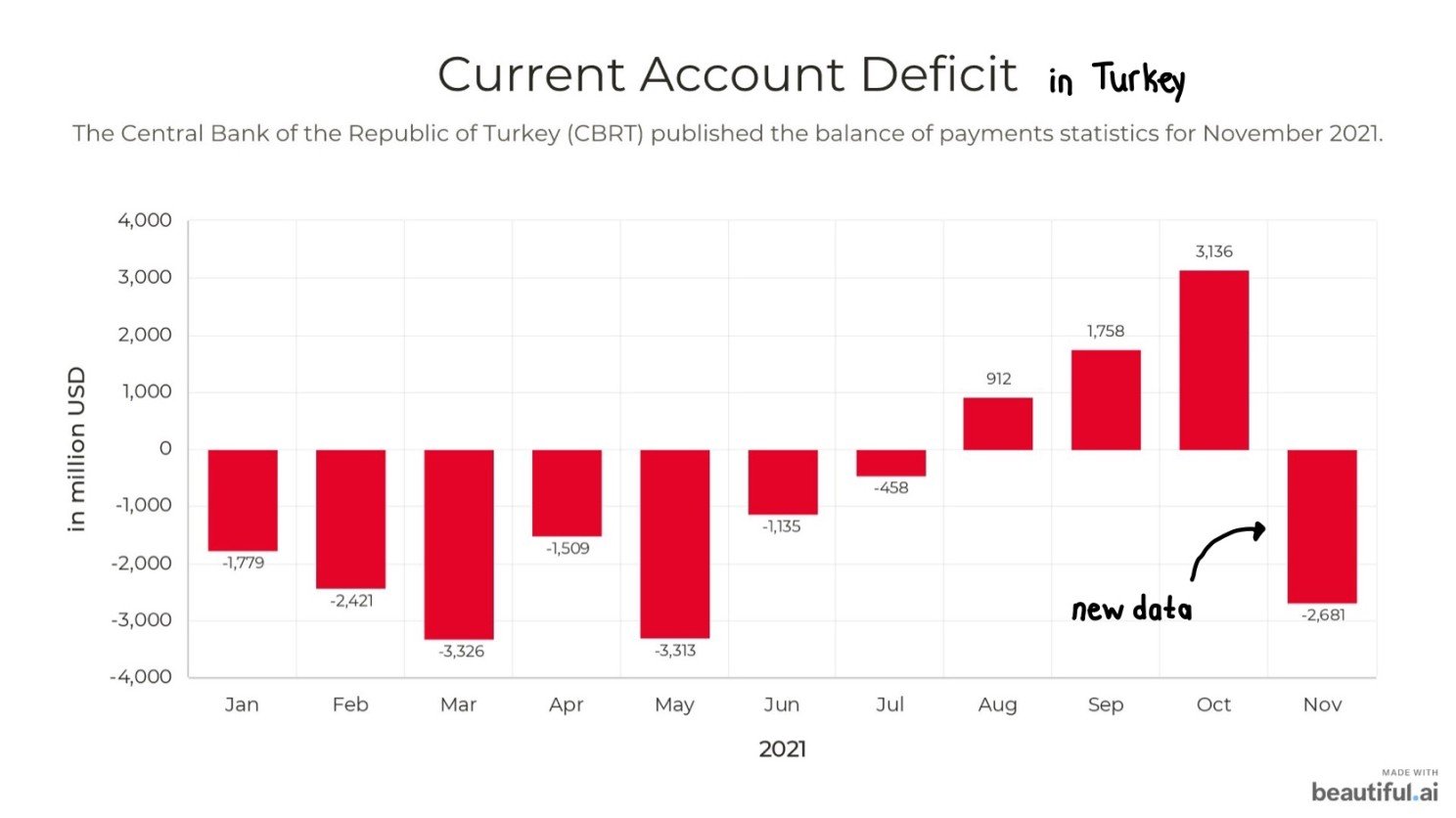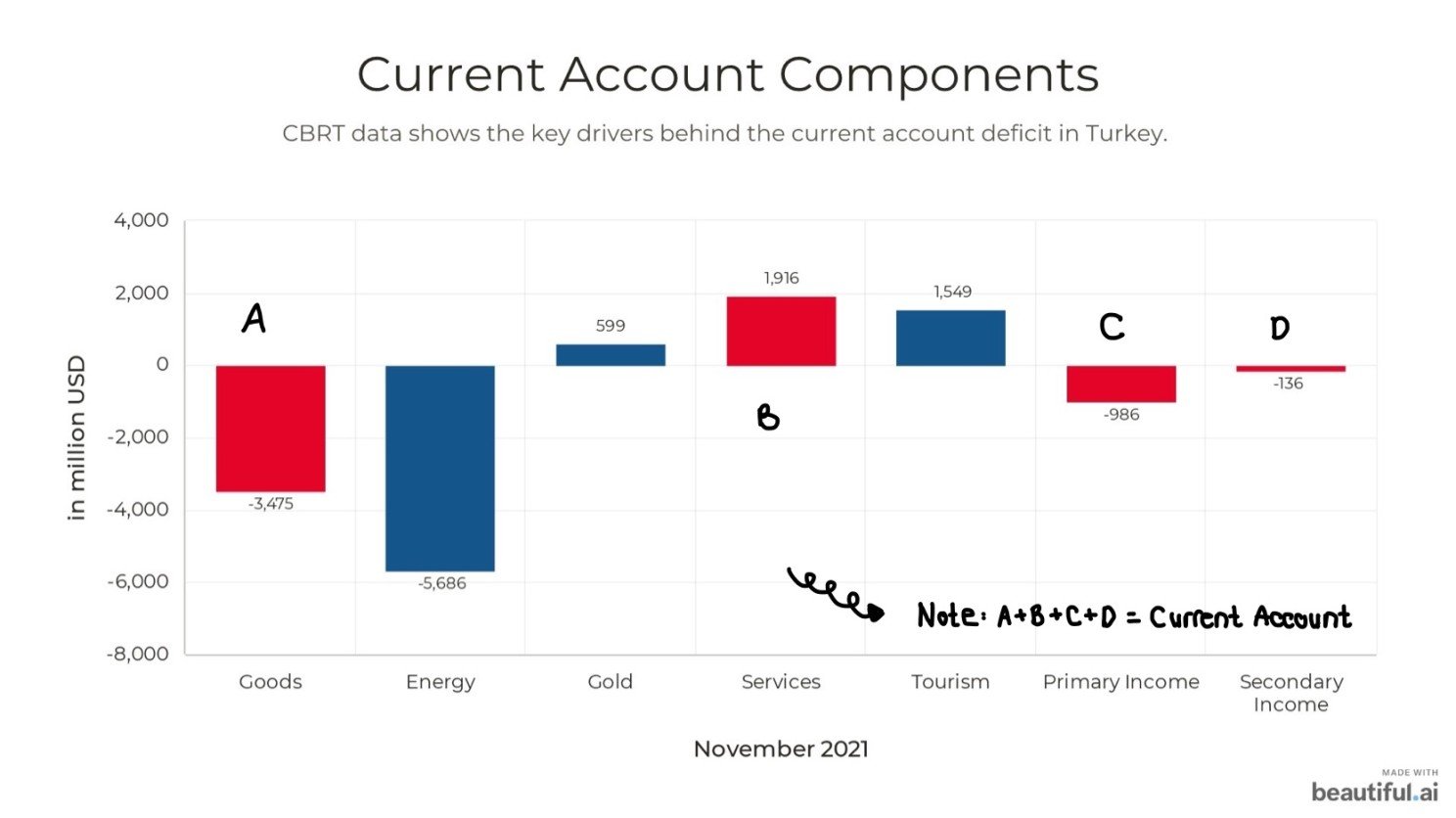Turkey's balance of payments: how is it and what does it mean?
This article was first published on LinkedIn on January 13, 2022.
The balance of payments (short: BoP) is a key macro economic report of how payments are flowing in and out if a country over a certain time period. This includes various forms of economic transactions, like imports and exports of goods, net transfers, or the inflows and outflows of assets. Hence, the BoP consists of different components that gives a clear picture of the strength and weaknesses in the economy. For instance, a trade deficit indicates that a country is more importing than exporting and possible directions of where policy interventions might be needed.
So let us have a look of newly published data by the CBRT (aka the Central Bank of the Republic of Turkey) to get a better understanding of the sometimes confusing (yet, quite simple) concept.
What does current account deficit mean?
The BoP is organised in three accounts: current account, capital account, and financial account. We will start with the current account, which shows transactions related to trade in goods, services and income (e.g., dividends from stocks or money transfer from relatives living abroad). On Tuesday the CBRT published the balance of payments statistics for November 2021. And as we can see from the graph bellow, after three months of surplus Turkey recorded a current account deficit of USD 2.68 billion in November. This is not a new phenomenon, as previous data shows. Turkey is running a trade deficit as it imports more than it exports, and other components such a trade in services or income are not high enough to offset the imbalance.
So does it mean a deficit is bad and a surplus is good. Not really. What is important are the movements of each component in the balance sheet of a country. As shown in the second graph below a key negative driver for the current account deficit in Turkey is the energy sector. Turkey depends on energy from abroad. Excluding gold and energy from the current account leads to a surplus of USD 2.4 billion. Therefore, this component clearly drives the current account down. At the same time services, which include tourism is not as high to offset this deficit. Tourism is a significant revenue source for the country, however as other services it has been hit by the pandemic. Primary and secondary income include cross-border money receipts and payments from assets as well as money transfers. As we see, those parts do not have high significance in the Turkish current account.
Can Turkey reach a surplus again?
Theoretically, it can for sure. As you can see from above energy is challenge for the Turkish economy. Changing that, such as investing more in renewable energy (e.g., solar or wind) or using the domestic newly discovered gas sources in the Black Sea could in the long-run decrease the dependency on foreign energy. Another factor is the services sector, which is mainly consisting of tourism. A sector that is currently below average due to the pandemic.
* Disclaimer: The views expressed herein are those of the author and do not necessarily reflect those of the Deutsche Bundesbank or of the Eurosystem.

